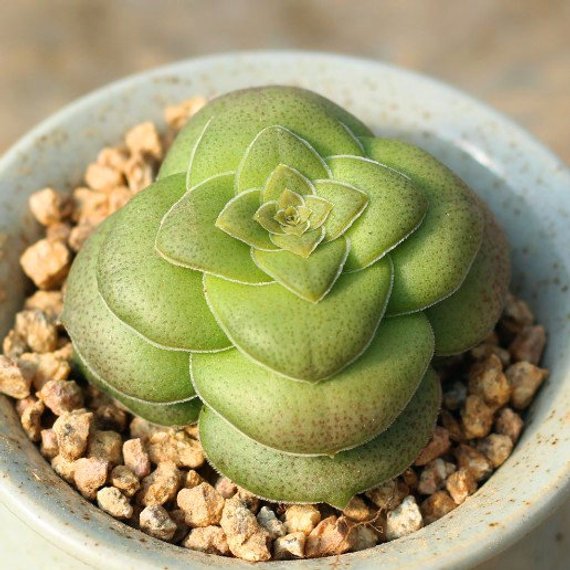Crassula hemisphaerica, belonging to the Crassulaceae family and the genus Sedum, prefers cool, dry, and sunny environments and goes dormant during high temperatures in summer. Cultivation key points: Optimal growth temperature is between 15-25 degrees Celsius, and it should not drop below 5 degrees Celsius in winter. The soil mix generally consists of a combination of peat, perlite, and pumice. During the growing season, water thoroughly when the soil is dry, while in the summer dormant period, ensure ventilation and dryness, provide moderate shading, control watering, and keep the potting soil dry. Fertilize once a month during the growing season. Propagation methods mainly include division and cutting. Division can be combined with repotting, or side shoots can be taken during the growing season, dried slightly, and then cuttings can be made. Newly potted plants should not be watered excessively but kept slightly moist to promote rooting.
Crassula hemisphaerica plants have short stems, with fleshy, semi-circular leaves arranged alternately in a cross shape, overlapping each other. The leaves are green and glossy, slightly rough due to densely distributed white papillae, with elliptical pointed tips and white hairs along the entire margin. Side shoots are easily produced at the Crassula hemisphaericase.
Its inflorescences are umbellate, with small white flowers. Crassula hemisphaerica prefers cool, dry, and sunny environments and goes dormant during high temperatures in summer. Cultivation key points: Optimal growth temperature is between 15-25 degrees Celsius, and it should not drop below 5 degrees Celsius in winter. The soil mix generally consists of a combination of peat, perlite, and pumice. During the growing season, water thoroughly when the soil is dry, while in the summer dormant period, ensure ventilation and dryness, provide moderate shading, control watering, and keep the potting soil dry. Fertilize once a month during the growing season. Propagation methods mainly include division and cutting. Division can be combined with repotting, or side shoots can be taken during the growing season, dried slightly, and then cuttings can be made. Newly potted plants should not be watered excessively but kept slightly moist to promote rooting.
Growing season: Winter
Sunlight: Moderate
Watering: Moderate
